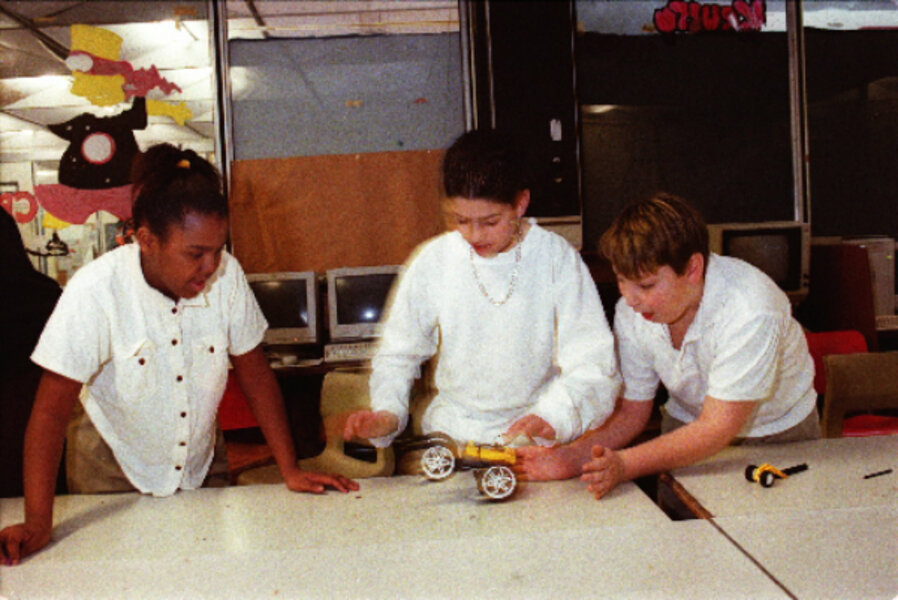Lego course teaches kids engineering, design, and gear ratios
Loading...
| Tuscaloosa, Ala.
In an almost inevitable chain of events, cars, conveyor belts, and other contraptions came to be in a classroom full of children and Legos at Shelton State Community College on Tuesday.
"I don't know a kid who doesn't love Legos," said Shannon Camper, director of Community Education and Lifelong Learning at Shelton State.
The contraptions are part of the Lego Engineering 2013 program at Shelton State's Kidz Kollege, a series of classes for elementary, middle, and junior high school students that uses the toy as a way to build interest in science and mathematics.
"I think that this is going to get on their level with something they love," Camper said.
This summer is the first year for the Lego courses at Shelton State. While the Kidz Kollege has traditionally offered math classes such as algebra and geometry, it has lacked a science component before the addition of Lego Engineering, Camper said.
"The one thing I feel like we have been missing during the last seven years I have been directing is science," Camper said.
The program, which began Monday, has 112 students enrolled, Camper said. The program costs $155 per week, which includes four three-hour classes.
Camper said the class size ranges from about 16 to 22 students. Morning classes cater to students between the first and third grades, and the afternoon sessions are for fourth- to eighth-graders.
Camper said demand for the program has been strong, noting that classes during the first two weeks filled up, though spots were still available during the last week, which begins July 22.
The courses include Junior Vehicle Engineering and the more advanced Junior Engineering 2 for elementary students. For the older students, there is Elementary Engineering, Vehicle Engineering and Collision Cars, which include more complicated machines.
The classes, with the aid of Legos, focus on concepts such as basic engineering principles, design, gear ratios, simple machines and forces in motion, according to the program pamphlet.
For elementary-school age students on Tuesday, a Lego car powered by rubber bands became a lesson about propulsion, friction, potential energy and tension, according to enrichment instructor Allison Harrod, who teaches all the classes.
Harrod said students will also explore engineering and science concepts by building windmills, cranes and merry-go-rounds.
The activities also help the students socially, Camper said.
Harrod noted while traditional classroom work might confine students to their work and their desk, the Lego Engineering classes encourage collaboration and idea sharing.
"They are learning new ways to do things," Harrod said.





